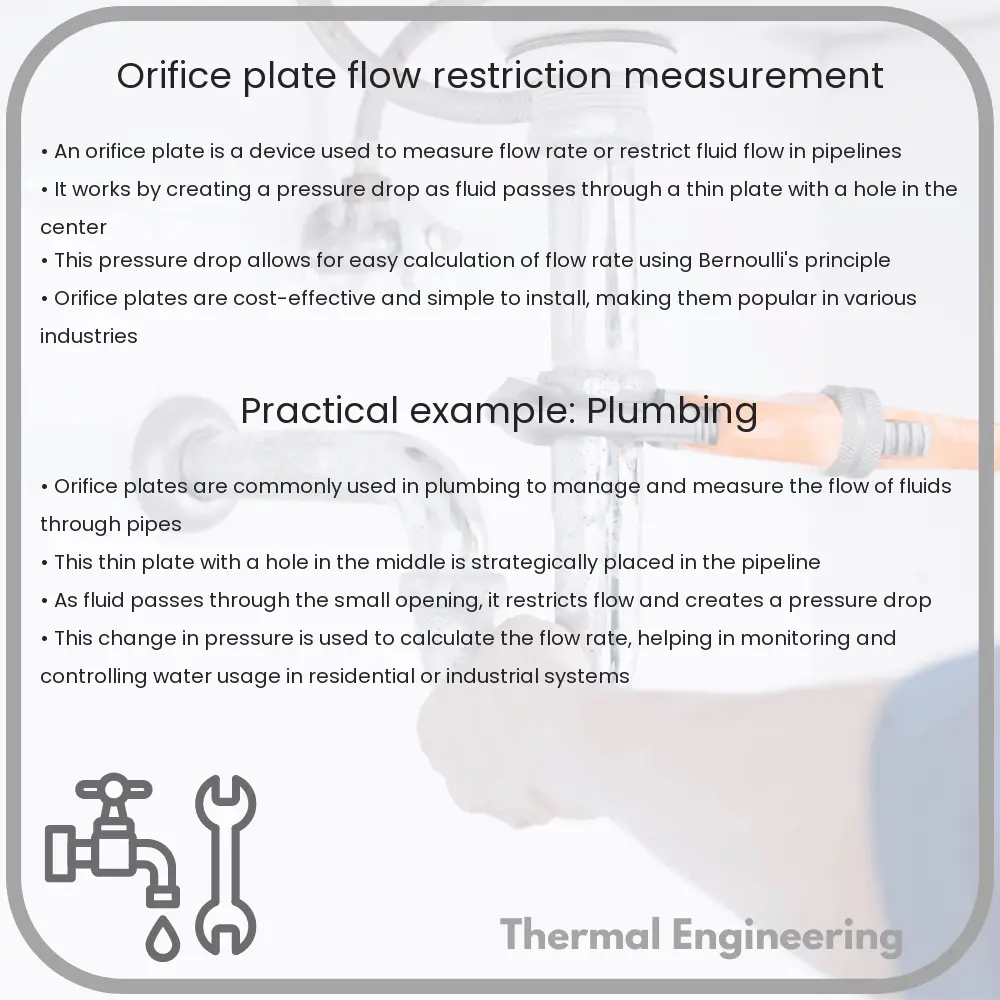Learn about orifice plates, crucial for measuring and controlling fluid flow in pipelines using principles of fluid dynamics.

Understanding Orifice Plates: Principles of Flow Restriction and Measurement
Orifice plates are simple yet essential devices used in fluid mechanics to measure flow rates and control or restrict fluid flow in pipelines. These devices function based on basic principles of physics and engineering, specifically Bernoulli’s equation and the continuity equation.
What is an Orifice Plate?
An orifice plate is a thin plate typically made of metal with a precise, sharp-edged hole drilled in it. It is installed in a pipeline and acts to constrict the flow of fluid (liquid or gas), causing a pressure drop across the plate. The characteristics of the orifice plate, such as the diameter of the hole and the thickness of the plate, significantly influence the flow and pressure drop, making it vital to calibrate them accurately for specific applications.
How Does an Orifice Plate Measure Flow Rates?
The operation of an orifice plate is based on two fundamental fluid dynamics equations:
- Bernoulli’s Equation: This principle implies that an increase in the speed of a fluid occurs simultaneously with a decrease in pressure or a decrease in the fluid’s potential energy.
- Continuity Equation: It asserts that the mass flow rate has to remain constant from one cross-section of a pipe to another, providing the flow is steady and the fluid is incompressible.
As fluid enters the orifice plate, it is forced to converge through the smaller hole, increasing its velocity and decreasing its pressure. This phenomenon is referred to as the “vena contracta” – the point where the stream diameter is at its smallest and the velocity is at its highest.
The basic equation used to determine the flow rate through an orifice plate can be expressed as:
\[ Q = C * A * \sqrt{\frac{2 * \Delta P}{\rho}} \]
- Q is the flow rate,
- C is the discharge coefficient, which accounts for the energy loss due to friction and the contraction of the stream,
- A is the area of the orifice,
- ∆P is the pressure drop across the orifice,
- ρ is the density of the fluid.
This equation highlights the direct relationship between the flow rate and the square root of the pressure differential, making it clear why measuring the pressure drop allows for the determination of the flow rate.
Applications and Benefits of Orifice Plates
Orifice plates are widely used across various industries including oil and gas, water treatment, and chemical processing because they are economical, easy to install, and applicable to a wide range of fluid types. Their benefits include:
- Simplicity: Orifice plates are simple and have no moving parts, making them reliable and low maintenance.
- Cost-effectiveness: They are less expensive than most other flow meters and control devices.
- Versatility: They can be used in a wide range of fluid flow conditions and temperatures.
The versatile nature and practicality of orifice plates in measuring and controlling fluid flow make them an indispensable tool in the field of hydraulic and pneumatic engineering. Understanding how they work offers insights into broader principles of fluid dynamics and engineering design.